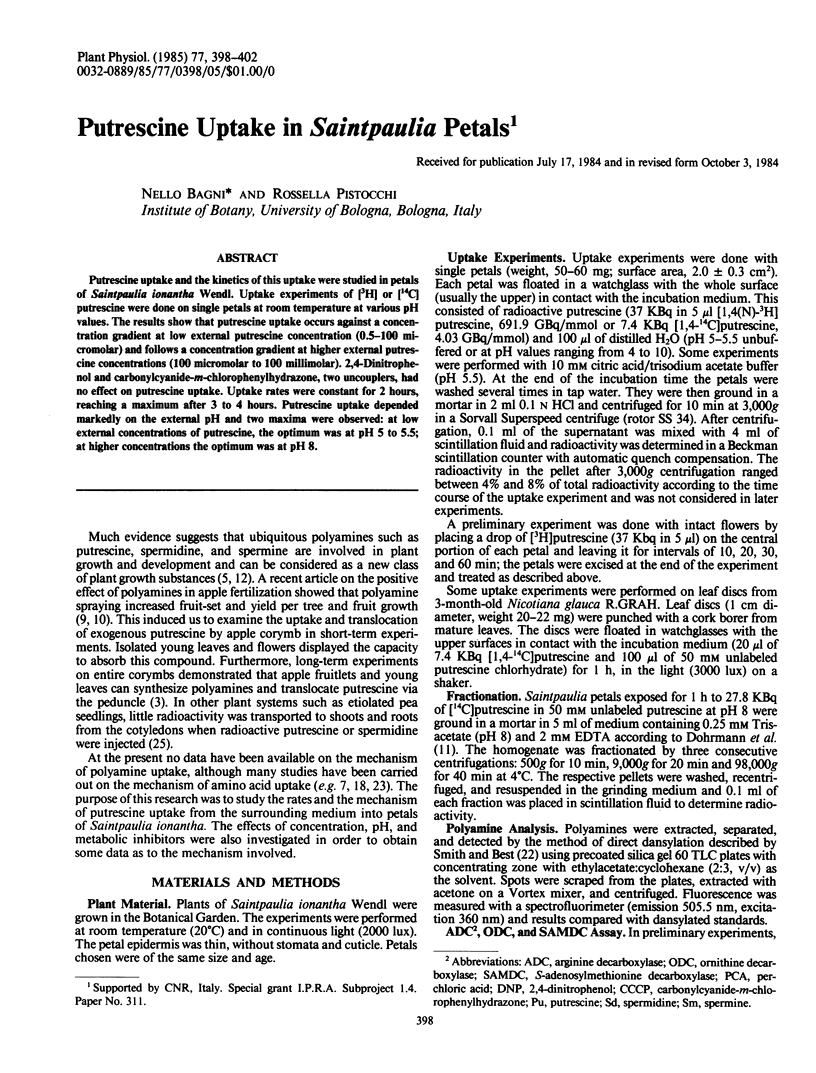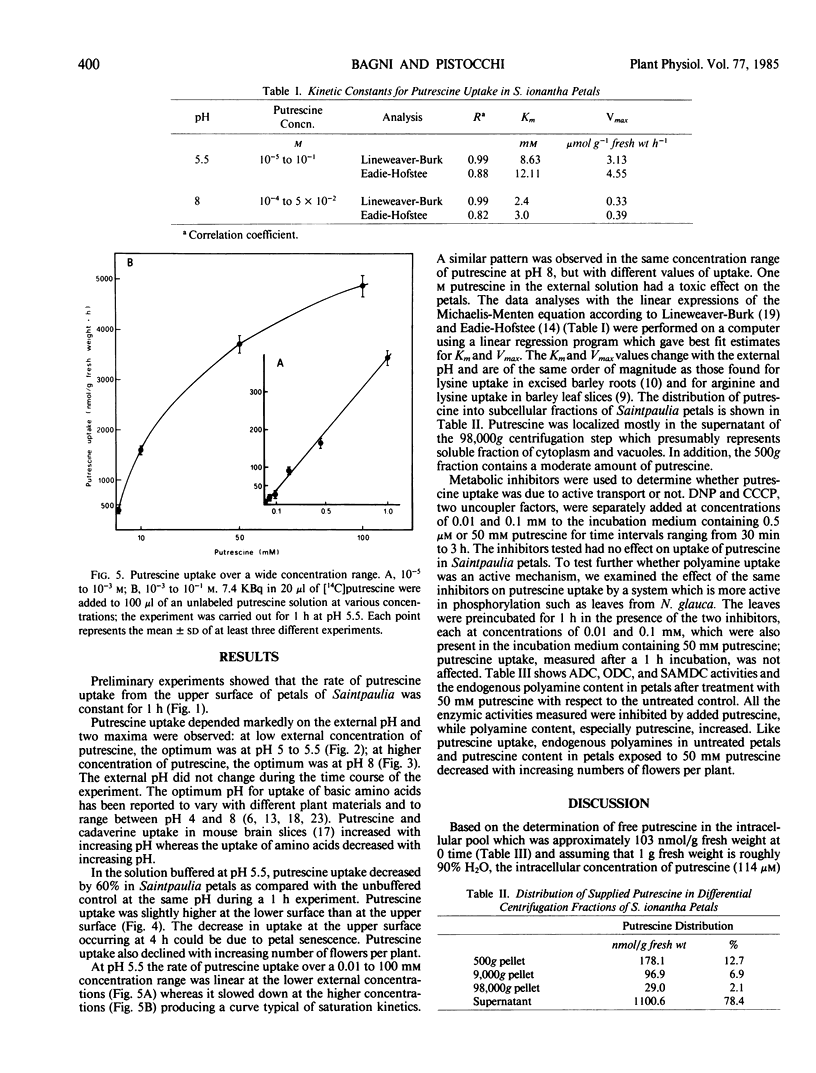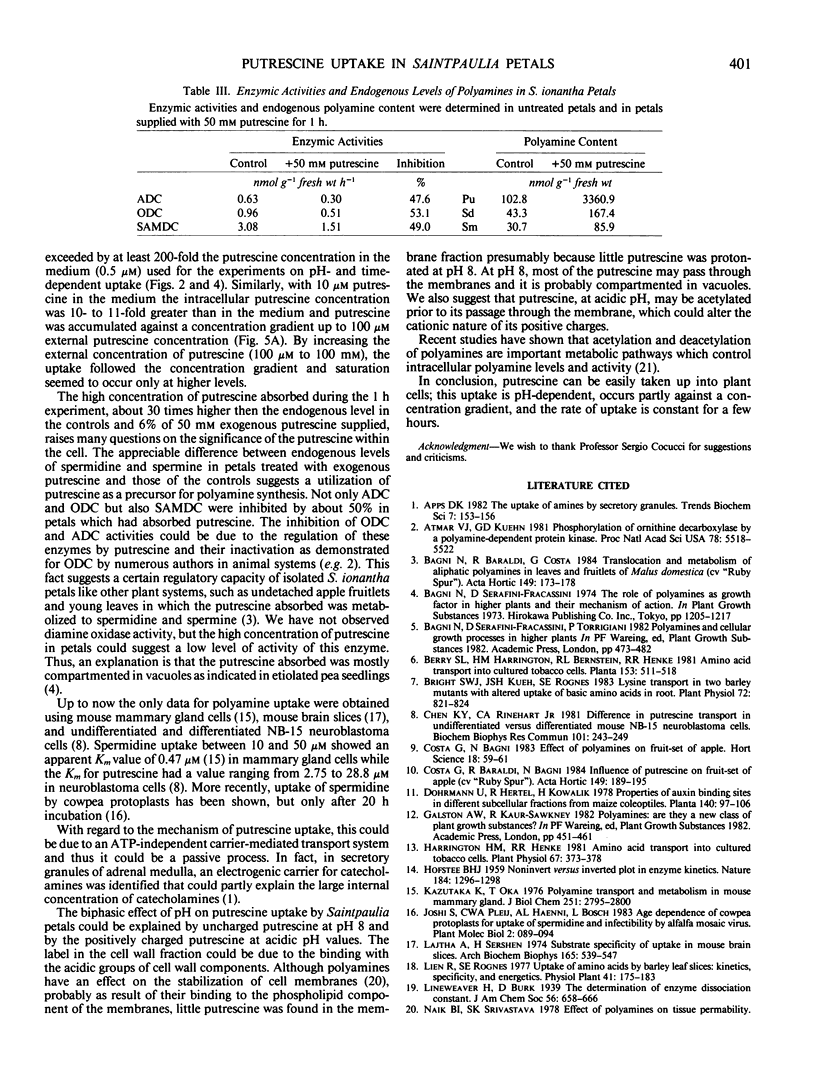Abstract
Putrescine uptake and the kinetics of this uptake were studied in petals of Saintpaulia ionantha Wendl. Uptake experiments of [3H] or [14C] putrescine were done on single petals at room temperature at various pH values. The results show that putrescine uptake occurs against a concentration gradient at low external putrescine concentration (0.5-100 micromolar) and follows a concentration gradient at higher external putrescine concentrations (100 micromolar to 100 millimolar). 2,4-Dinitrophenol and carbonylcyanide-m-chlorophenylhydrazone, two uncouplers, had no effect on putrescine uptake. Uptake rates were constant for 2 hours, reaching a maximum after 3 to 4 hours. Putrescine uptake depended markedly on the external pH and two maxima were observed: at low external concentrations of putrescine, the optimum was at pH 5 to 5.5; at higher concentrations the optimum was at pH 8.
Full text
PDF




Selected References
These references are in PubMed. This may not be the complete list of references from this article.
- Atmar V. J., Kuehn G. D. Phosphorylation of ornithine decarboxylase by a polyamine-dependent protein kinase. Proc Natl Acad Sci U S A. 1981 Sep;78(9):5518–5522. doi: 10.1073/pnas.78.9.5518. [DOI] [PMC free article] [PubMed] [Google Scholar]
- Bright S. W., Kueh J. S., Rognes S. E. Lysine transport in two barley mutants with altered uptake of basic amino acids in the root. Plant Physiol. 1983 Jul;72(3):821–824. doi: 10.1104/pp.72.3.821. [DOI] [PMC free article] [PubMed] [Google Scholar]
- Chen K. Y., Rinehart C. A., Jr Difference in putrescine transport in undifferentiated versus differentiated mouse NB-15 neuroblastoma cells. Biochem Biophys Res Commun. 1981 Jul 16;101(1):243–249. doi: 10.1016/s0006-291x(81)80037-x. [DOI] [PubMed] [Google Scholar]
- HOFSTEE B. H. Non-inverted versus inverted plots in enzyme kinetics. Nature. 1959 Oct 24;184:1296–1298. doi: 10.1038/1841296b0. [DOI] [PubMed] [Google Scholar]
- Harrington H. M., Henke R. R. Amino Acid Transport into Cultured Tobacco Cells: I. LYSINE TRANSPORT. Plant Physiol. 1981 Feb;67(2):373–378. doi: 10.1104/pp.67.2.373. [DOI] [PMC free article] [PubMed] [Google Scholar]
- Kano K., Oka T. Polyamine transport and metabolism in mouse mammary gland. General properties and hormonal regulation. J Biol Chem. 1976 May 10;251(9):2795–2800. [PubMed] [Google Scholar]
- Lajtha A., Sershen H. Substrate specificity of uptake of diamines in mouse brain slices. Arch Biochem Biophys. 1974 Dec;165(2):539–547. doi: 10.1016/0003-9861(74)90280-x. [DOI] [PubMed] [Google Scholar]
- Suresh M. R., Adiga P. R. Putrescine-sensitive (artifactual) and insensitive (biosynthetic) S-adenosyl-L-methionine decarboxylase activities of Lathyrus sativus seedlings. Eur J Biochem. 1977 Oct 3;79(2):511–518. doi: 10.1111/j.1432-1033.1977.tb11835.x. [DOI] [PubMed] [Google Scholar]
- Young N. D., Galston A. W. Are polyamines transported in etiolated peas? Plant Physiol. 1983 Dec;73(4):912–914. doi: 10.1104/pp.73.4.912. [DOI] [PMC free article] [PubMed] [Google Scholar]


